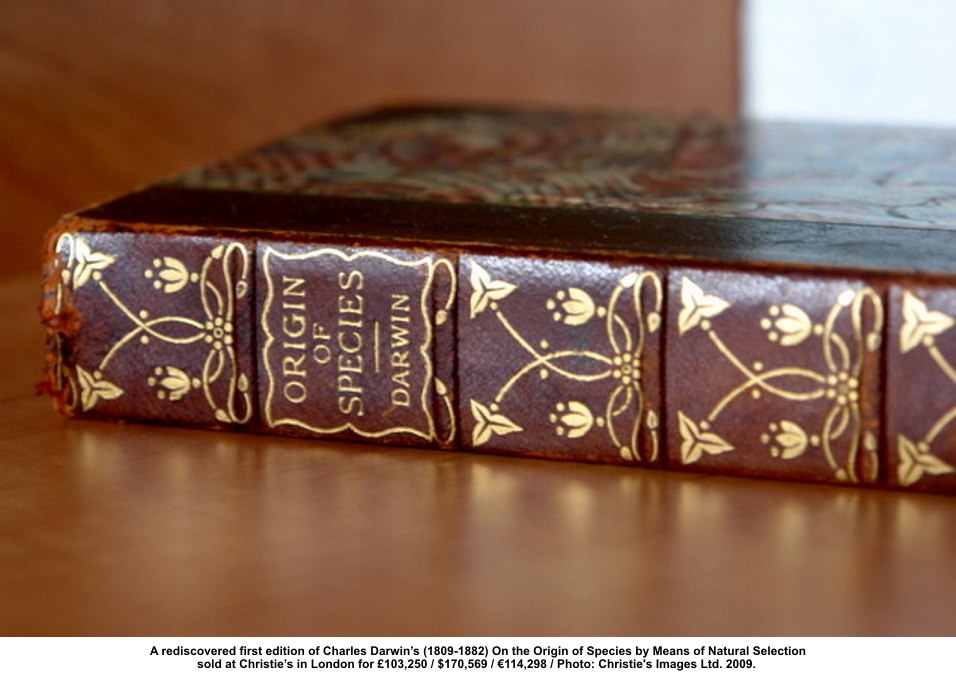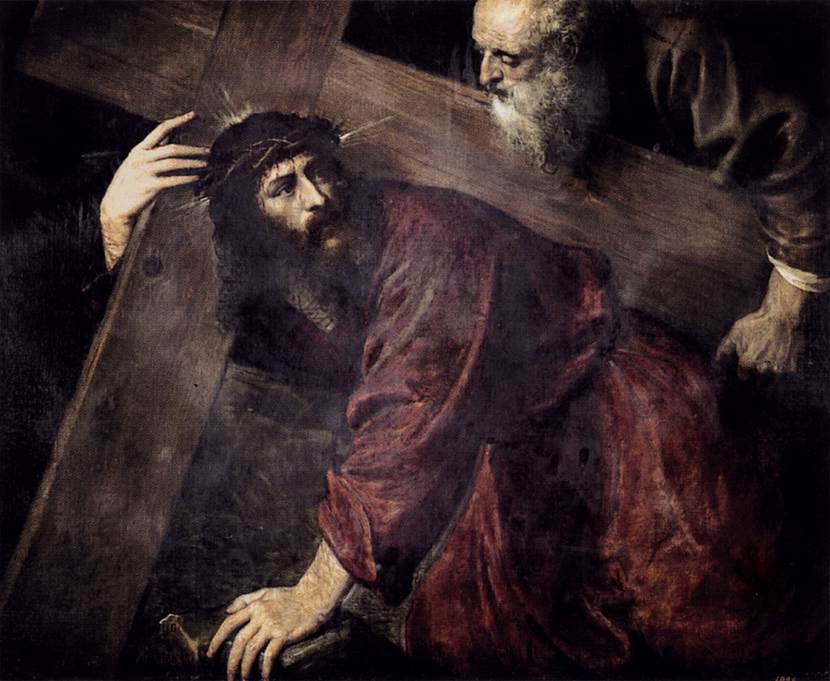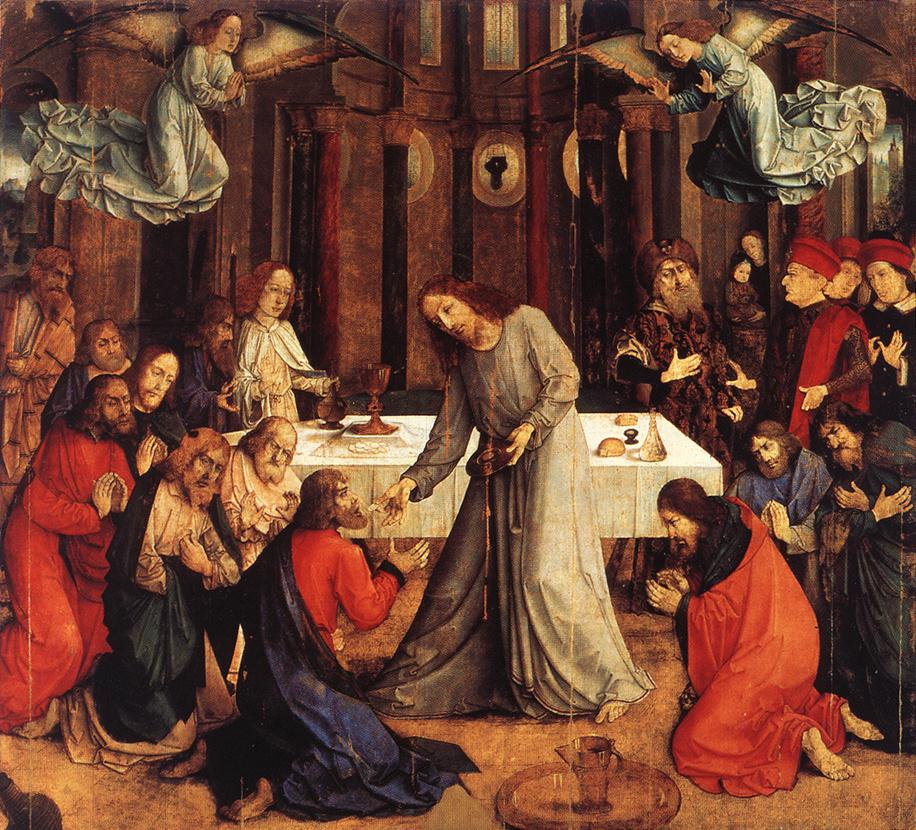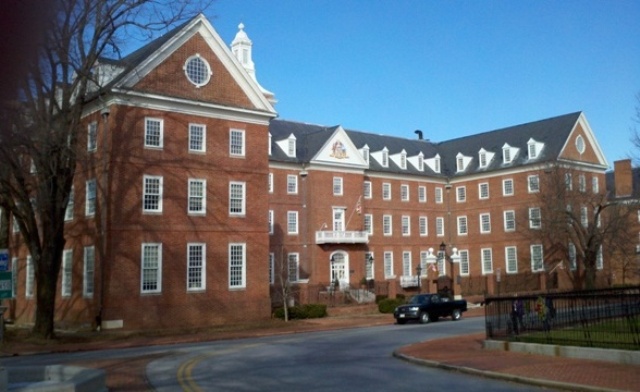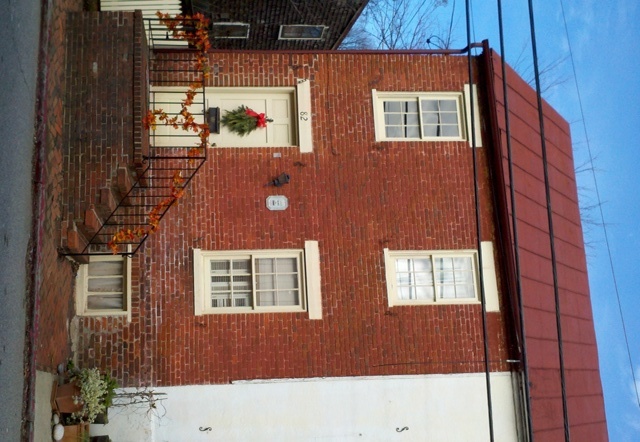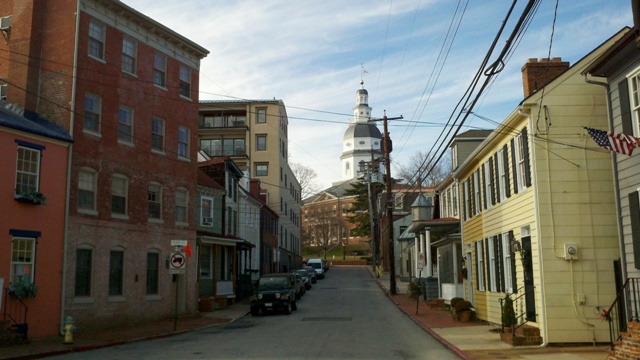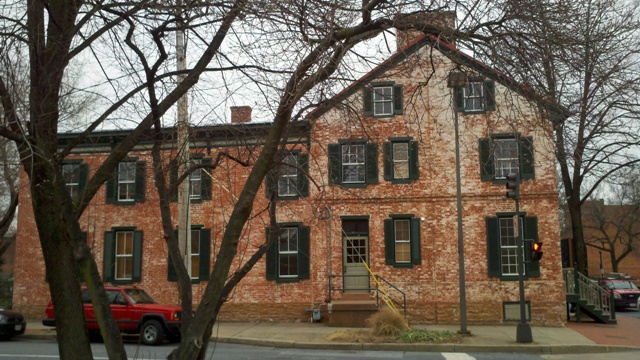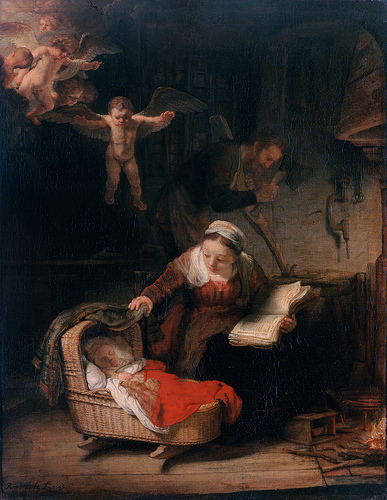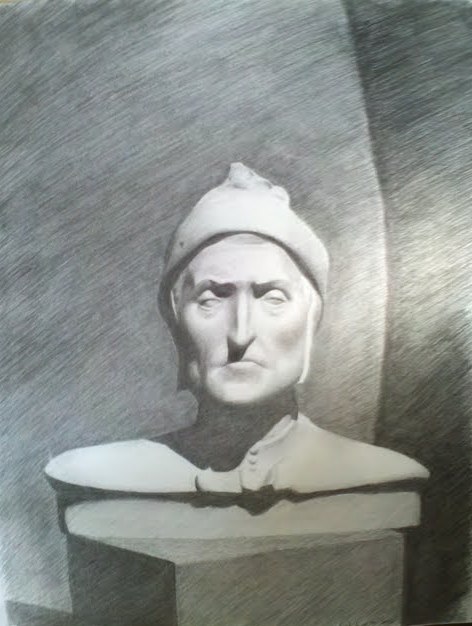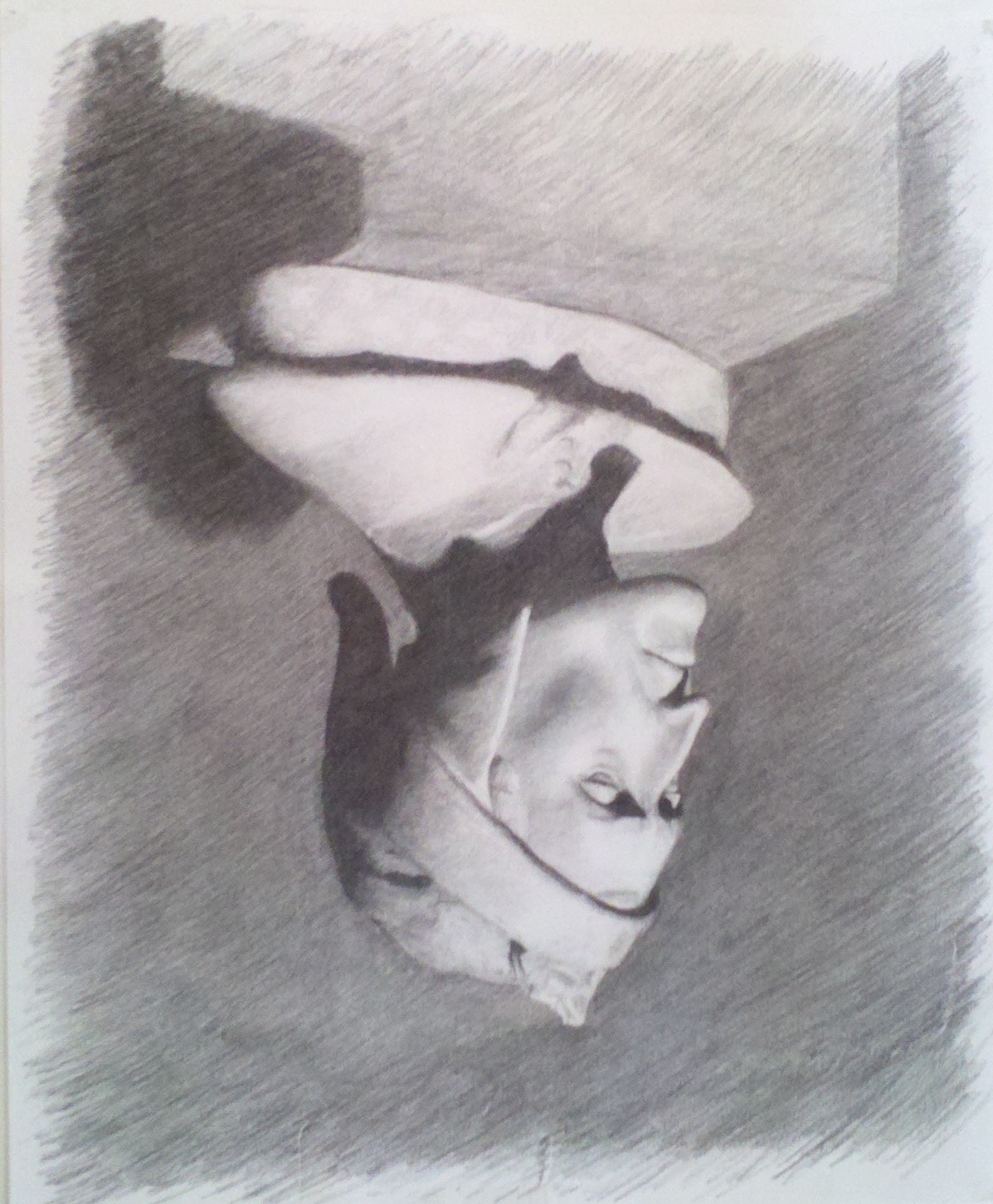 Anyone can be creative and intuitive The training methods of the great artist of the past didn't just teach them the skill of the craft. They were taught in a way that required them to submit to the directions of a master and so engendered a humility. At the same time they would have a spiritual life that encouraged an openness to inspiration and a desire to follow it if given. In short, their training taught them to be open to God's inspiration and to recognise it when it was given. This is the source of the great beauty and rich creativity of their work and here's what's so good about this. You don't need to be an artist to benefit from their training methods. If any of us do what they did, we can be creative and intuitive in pursuing our own personal vocation. And if you don't know what your personal vocation is yet, this will help you to find that too.
The weekend summer retreats hosted by the Way of Beauty Atelier at Thomas More College of Liberal Arts in Merrimack, New Hampshire, can teach you these traditional methods. It is a peaceful campus with a traditional New England feel and the perfect place to learn and grow. To find out more details, follow the link through to the college website, here.
Anyone can be creative and intuitive The training methods of the great artist of the past didn't just teach them the skill of the craft. They were taught in a way that required them to submit to the directions of a master and so engendered a humility. At the same time they would have a spiritual life that encouraged an openness to inspiration and a desire to follow it if given. In short, their training taught them to be open to God's inspiration and to recognise it when it was given. This is the source of the great beauty and rich creativity of their work and here's what's so good about this. You don't need to be an artist to benefit from their training methods. If any of us do what they did, we can be creative and intuitive in pursuing our own personal vocation. And if you don't know what your personal vocation is yet, this will help you to find that too.
The weekend summer retreats hosted by the Way of Beauty Atelier at Thomas More College of Liberal Arts in Merrimack, New Hampshire, can teach you these traditional methods. It is a peaceful campus with a traditional New England feel and the perfect place to learn and grow. To find out more details, follow the link through to the college website, here.
The Art of Nina Somerset at St Silas the Martyr Church, in London
 The following works of art were brought to my attention by a reader. They are by a lady who is otherwise unkown to me and who died in 1982, called Nina Somerset. The website of the church in which these appear, St Silas the Martyr says talks about a devout Christian who was a daily communicant (I can't see any direct reference on the site, but I am guessing that this is a high Anglican church and not Catholic. The website for the church is here). It says that she trained as an art student in the Bournemouth in the 1920s. I would describe her style as derived from the pre-Raphaelite and the Victorian neo-gothic movement.These movements took their inspiration from the late gothic period, prior to the High Renaissance. I am not always enamoured with the art of this inspiration (although I do like the neo-gothic arthitecture very much). Pre-Raphaelite painting in particular is too naturalistic to achieve the gothic look, which is much stylised, and it comes across as too sentimental. Nina Somerset's art works, I feel because it seems that she is working so as to try to remove as far as possible the illusion of depth. This two-demensionality offsets the naturalism. Having said that, my taste is for the yet-more-austere original gothic style and these are still a little on the sentimental side for my liking. Nevertheless the result is still well worth looking at. I thought that perhaps some readers will enjoy them without such reservations.
The following works of art were brought to my attention by a reader. They are by a lady who is otherwise unkown to me and who died in 1982, called Nina Somerset. The website of the church in which these appear, St Silas the Martyr says talks about a devout Christian who was a daily communicant (I can't see any direct reference on the site, but I am guessing that this is a high Anglican church and not Catholic. The website for the church is here). It says that she trained as an art student in the Bournemouth in the 1920s. I would describe her style as derived from the pre-Raphaelite and the Victorian neo-gothic movement.These movements took their inspiration from the late gothic period, prior to the High Renaissance. I am not always enamoured with the art of this inspiration (although I do like the neo-gothic arthitecture very much). Pre-Raphaelite painting in particular is too naturalistic to achieve the gothic look, which is much stylised, and it comes across as too sentimental. Nina Somerset's art works, I feel because it seems that she is working so as to try to remove as far as possible the illusion of depth. This two-demensionality offsets the naturalism. Having said that, my taste is for the yet-more-austere original gothic style and these are still a little on the sentimental side for my liking. Nevertheless the result is still well worth looking at. I thought that perhaps some readers will enjoy them without such reservations. Sentimentality is the scourge of naturalistic sacred art from the 19th century onwards. From this time on, the mainstream in art has moved more and more towards the ugliness and distorted naturalism and eventually abstraction that best incarnates the materialist secular worldview. The visual vocabulary associated with these styles has great power in communicating this distorted world view. If we try to communicate something good by the same means, such as one might in sacred art, the result is weak and superficial. As an illustration of this think how poor Christian rock is at communicating Christian values compared with the power with which the original communicates the hedonism of a lifestyle focussed on sex, drugs and rock'n'roll.It seems that all of us today are affected by this imagery, whether we like it or not. Even if we are trying to communicate something genuinely good we cannot help be affected in some subtle way by the style of mainstream art. To the degree that we are, sentimentality creeps in. Often we cannot see what it is we have done, but we can see the sentimetality that results from it. Therefore the artist today must anticipate that it is probably going to creep in and deliberately try to offset this tendency in his work. One way is to use media that give flatter, more two-dimensional images (see above, right). Egg tempera, embroidery, gouache, mosaic and fresco, will always look flatter than oil paintings even if the colours are placed in an identical way. This arises from different interaction with light - they reflect and refract it differently. Even if you use oil paint, if you can avoid using thin, translucent glazes will create that effect more. (The other side of this is that oil and water colour are much better for if you want to create the illusion of depth - for example if I was painting a landscape.)So, here we have the work of Nina Somerset.
Sentimentality is the scourge of naturalistic sacred art from the 19th century onwards. From this time on, the mainstream in art has moved more and more towards the ugliness and distorted naturalism and eventually abstraction that best incarnates the materialist secular worldview. The visual vocabulary associated with these styles has great power in communicating this distorted world view. If we try to communicate something good by the same means, such as one might in sacred art, the result is weak and superficial. As an illustration of this think how poor Christian rock is at communicating Christian values compared with the power with which the original communicates the hedonism of a lifestyle focussed on sex, drugs and rock'n'roll.It seems that all of us today are affected by this imagery, whether we like it or not. Even if we are trying to communicate something genuinely good we cannot help be affected in some subtle way by the style of mainstream art. To the degree that we are, sentimentality creeps in. Often we cannot see what it is we have done, but we can see the sentimetality that results from it. Therefore the artist today must anticipate that it is probably going to creep in and deliberately try to offset this tendency in his work. One way is to use media that give flatter, more two-dimensional images (see above, right). Egg tempera, embroidery, gouache, mosaic and fresco, will always look flatter than oil paintings even if the colours are placed in an identical way. This arises from different interaction with light - they reflect and refract it differently. Even if you use oil paint, if you can avoid using thin, translucent glazes will create that effect more. (The other side of this is that oil and water colour are much better for if you want to create the illusion of depth - for example if I was painting a landscape.)So, here we have the work of Nina Somerset.
Learn to paint icons the tradition way, the Catholic way
Many people think that icons are the preserve of the Eastern Church, or even the Orthodox Church. So it may surprise you to discover that this is not true. The iconographic tradition is as firmly rooted in the West as it is in the East. To give just one example, did you know that traditional Celtic art is iconographic? Did you know also that what we see taught in most icon classes today is not part of an unbroken tradition that goes back to the early church, but a modern construct created by Russian ex-pats living in France in the mid-20th century? If you want to understand what an icon really is and to learn how to paint icons in the traditional, Catholic way then come along to the icon painting week that I am teaching at the Way of Beauty Atelier is hosting at Thomas More College of Liberal Arts this summer in Merrimack, NH. For more details go to the page on the Thomas More College website, here. Hope to see you in the summer!
Hypothesis or Theorem? Evolution, Global Warming and Multiple Universes
 How understanding the difference between hypothesis and theorem can often enable us to assess the validity of these proposals. There is a video produced by Illustra Media called Darwin’s Dilemma that discusses how recently observed scientific data raises doubts about the validity of Charles Darwin’s hypothesis concerning the origin of different species of animals – ‘evolution’. In order to be able to make a judgment as to whether or not Darwin’s proposal about the origin of species is scientifically proven or not, one must understand clearly the distinction between hypothesis and theorem. This is because hypothesis does not constitute scientific proof; theorem does. This video is good because it clearly explains the difference between the two cases.
The scientific method involves the observation of natural phenomena and then a presentation by the scientist of a possible explanation of these observations in the form of the physical laws that govern the processes. This first explanation he produces is a hypothesis. Darwin’s ‘theory’ of evolution as most people refer to it was in fact presented not as a theory, in the strict scientific sense, but as a hypothesis. And here is the important point to understand: even if we assume that research and logic behind the hypothesis is sound, if all we have is a hypothesis, it does not yet constitute scientific proof. We might characterise it at this stage it as only considered possibly true. In order to make that transition from possibly true (hypothesis) to probably true (theorem) the hypothesis has to be tested. Most commonly, the scientist tests the hypothesis by looking for new phenomena that are predicted by the hypothesis and which could not have been predicted otherwise. If these data are subsequently observed repeatedly, then the hypothesis is confirmed and it is now considered a theorem; and probably true.
How understanding the difference between hypothesis and theorem can often enable us to assess the validity of these proposals. There is a video produced by Illustra Media called Darwin’s Dilemma that discusses how recently observed scientific data raises doubts about the validity of Charles Darwin’s hypothesis concerning the origin of different species of animals – ‘evolution’. In order to be able to make a judgment as to whether or not Darwin’s proposal about the origin of species is scientifically proven or not, one must understand clearly the distinction between hypothesis and theorem. This is because hypothesis does not constitute scientific proof; theorem does. This video is good because it clearly explains the difference between the two cases.
The scientific method involves the observation of natural phenomena and then a presentation by the scientist of a possible explanation of these observations in the form of the physical laws that govern the processes. This first explanation he produces is a hypothesis. Darwin’s ‘theory’ of evolution as most people refer to it was in fact presented not as a theory, in the strict scientific sense, but as a hypothesis. And here is the important point to understand: even if we assume that research and logic behind the hypothesis is sound, if all we have is a hypothesis, it does not yet constitute scientific proof. We might characterise it at this stage it as only considered possibly true. In order to make that transition from possibly true (hypothesis) to probably true (theorem) the hypothesis has to be tested. Most commonly, the scientist tests the hypothesis by looking for new phenomena that are predicted by the hypothesis and which could not have been predicted otherwise. If these data are subsequently observed repeatedly, then the hypothesis is confirmed and it is now considered a theorem; and probably true.
Darwin’s hypothesis predicted the existence of fossils of intermediary species that indicated that all known species of animals were descended from a common ancestor. The dilemma referred to in the title is that the fossil evidence has not yet supported the hypothesis. This does not in itself disprove the hypothesis. It is still possibly true and in the past many argued that we still might find the fossils in the future because the fossil record is incomplete. The point that the video makes is that after more than 100 years of scientists looking for such fossils, they still have still not been found. Furthermore, advances in science coupled with the recent discovery of many new fossil records seem to indicate that a strong argument could made that the fossil record is close to being complete. This being the case it is most likely that we will never find fossils of those intermediary species. Therefore, it argues, it might be time for even the hypothesis to be discarded as probably not true; at the very least we should start looking for an alternative explanation for the origin of species.
In reaction to this the following points are probably worth making also: first, invalidating one hypothesis doesn’t automatically make another true. Each should be considered on its own merits. For example, intelligent design or creationism should not be considered true simply because we consider that we failed to demonstrate that evolution constitutes a theory. These hypotheses should be considered on their own merits.
 Second, it is important to be aware of whether or not a proposal is hypothesis or theorem before we can decide whether or not to take action in response to it. Just as one can be too quick to accept a hypothesis as truth, one can in the other extreme be overly skeptical and reject proven theorems. Scientific proof is not a formal proof of truth according to deductive logic (for reasons too long to go into here). This means that even when a proposal makes the transition from hypothesis to theorem it does not go from being categorized as ‘possible’ to being categorized as ‘certain’; but rather from ‘possible’ to ‘probable’. We cannot be absolutely certain of our theorem because unless we have data in regard to our proposal as it applies to the whole universe over all time (which we never do) it is always possible that in the future new data will emerge which will undermine it. All theorems are in this sense merely provisional. However, although we say that an element of doubt remains, we say also that once a theorem has been established that we consider it to be sufficiently close to certainty that we behave as though it is true. So we go ahead and build the bridge, construct the building, or manufacture the drug and entrust our safety to them all. Some who are overly skeptical of science as a discipline reject even proven theorems on the grounds that some doubt remains, or that past theorems subsequently proved false and had to be revised. This is not, in my opinion, a reasonable course of action. At some point you have to act with the balance of probability and behave as though it is true, and the transition from hypothesis to theorem is that point. The steady progress of our scientific knowledge since the scientific method was developed in the middle ages points to the general (if not perfect) reliability of acting on the assumption that a scientific theorem is true.
Second, it is important to be aware of whether or not a proposal is hypothesis or theorem before we can decide whether or not to take action in response to it. Just as one can be too quick to accept a hypothesis as truth, one can in the other extreme be overly skeptical and reject proven theorems. Scientific proof is not a formal proof of truth according to deductive logic (for reasons too long to go into here). This means that even when a proposal makes the transition from hypothesis to theorem it does not go from being categorized as ‘possible’ to being categorized as ‘certain’; but rather from ‘possible’ to ‘probable’. We cannot be absolutely certain of our theorem because unless we have data in regard to our proposal as it applies to the whole universe over all time (which we never do) it is always possible that in the future new data will emerge which will undermine it. All theorems are in this sense merely provisional. However, although we say that an element of doubt remains, we say also that once a theorem has been established that we consider it to be sufficiently close to certainty that we behave as though it is true. So we go ahead and build the bridge, construct the building, or manufacture the drug and entrust our safety to them all. Some who are overly skeptical of science as a discipline reject even proven theorems on the grounds that some doubt remains, or that past theorems subsequently proved false and had to be revised. This is not, in my opinion, a reasonable course of action. At some point you have to act with the balance of probability and behave as though it is true, and the transition from hypothesis to theorem is that point. The steady progress of our scientific knowledge since the scientific method was developed in the middle ages points to the general (if not perfect) reliability of acting on the assumption that a scientific theorem is true.
To summarize: to the degree that we must act on a proposal, we treat a hypothesis as not true, and a theorem as true. Certainly, sometimes this will end in disaster - bridges do fall down from time to time, and medical cures sometimes prove to have previously unforeseen side effects. However, in order to lead a life at all, we have to do the best we can with the best information available and this is why we do it.
In regard to Darwin’s proposal concerning the origin of species: some protestant Christian denominations especially seem anxious to establish that evolution could never become proven theorem, because they fear that it undermines the truth of the Bible rather than a desire to find out what is true. As a Catholic I have no such worries and can look at how the science plays out with a detached interest.
To understand the distinction between hypothesis and theorem often allows non-scientists to assess the validity of most discussions about science without ever needing to see the raw data or understand deeply the scientific analysis of it. A huge proportion of the articles written about hot scientific topics, such as anthropomorphic global warming, make arguments (pro- and con-) that claim to be based in scientific fact, but are in fact presenting hypothesis and not theorem. Often they do not use scientific arguments at all. They might for example give anecdotal stories based upon personal memories about how hot or cold it was in the past compared to now, especially if we are now going through a cold snap or a heat wave. Notwithstanding the unreliability of memory in gauging temperature, this ignores the fact that extreme conditions do not indicate general trends. Sometimes we are told that something must be true because ‘2,000 scientists say so’ (when democracy is not a principle for determining truth in science - it has to be tested using objective standards); or tell us we have to act now because the penalties of not doing so are too great to contemplate (without regard to the actual likelihood of it being true, which is absurd). None of these types of argument should be taken seriously when considering whether or not something is true and demanding greater clarity from our journalists might actually force them to be more responsible and rigorous in reporting on such things (although I’m not holding my breath).
Incidentally, this lack of rigour in reporting science is not new. The dispute between members of the hierarchy of the Church and Galileo was about many different things, but in regard to science it was about whether his proposal could be considered a hypothesis or a theorem. Galileo was told, you can teach this, but only as a hypothesis. Galileo insisted on describing it as proven theorem however. In this regard Galileo was wrong and St Robert Bellarmine was right. The necessary data that confirmed the proposal as a theorem was not observed until the 19th century.
Praying the Mass and the Liturgy of the Hours teaches us how to discerning God's will
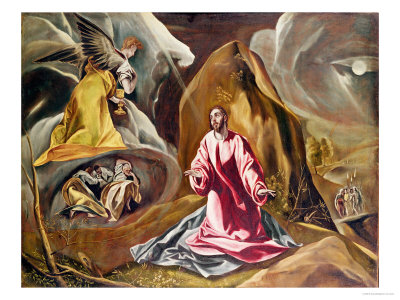 Liturgical prayer is a means for discerning our personal vocation and God’s will for us…and so much more In the Lenten readings from the Liturgy of the Hours we have an example how through the Liturgy the Church instructs us about the value of praying the Liturgy with the Church. The reading from Vespers on Monday of weeks 1 and 2 in Lent reads:
‘My brothers, I implore you by God’s mercy to offer your very selves to him: a living sacrifice, dedicated and fit for his acceptance, the worship offered by mind and heart. Adapt yourselves no longer to the pattern of this present world, but let your minds be remade and your whole nature thus transformed. Then you will be able to discern the will of God, and to know what is good, acceptable and perfect.’ (Rom 12:1-2)
Liturgical prayer is a means for discerning our personal vocation and God’s will for us…and so much more In the Lenten readings from the Liturgy of the Hours we have an example how through the Liturgy the Church instructs us about the value of praying the Liturgy with the Church. The reading from Vespers on Monday of weeks 1 and 2 in Lent reads:
‘My brothers, I implore you by God’s mercy to offer your very selves to him: a living sacrifice, dedicated and fit for his acceptance, the worship offered by mind and heart. Adapt yourselves no longer to the pattern of this present world, but let your minds be remade and your whole nature thus transformed. Then you will be able to discern the will of God, and to know what is good, acceptable and perfect.’ (Rom 12:1-2)
This passage is telling us in order to discern the will of God, we ought to make a ‘living sacrifice’ of ourselves. That living sacrifice is specifically our worship of God, that is, our participation in the liturgy - the Mass and the Liturgy of the Hours. What makes this living sacrifice ‘worthy and fit for his acceptance’ is that it is a participation in the only living sacrifice than can have that high worth, that is the sacrifice of Christ himself. There is only an upside to this. We get a free ride - we pray the liturgy, and in so doing open ourselves up to the reception of all the benefits of the supreme act of living made by someone else, without experiencing any of the pain. Christ bears all of that. It is an absurdly one-sided arrangement in our favour. It is such good news that it is scarcely believable, yet this is truly what we are offered through the Church. There is a standing offer already made, and our prayer is the act of acceptance.
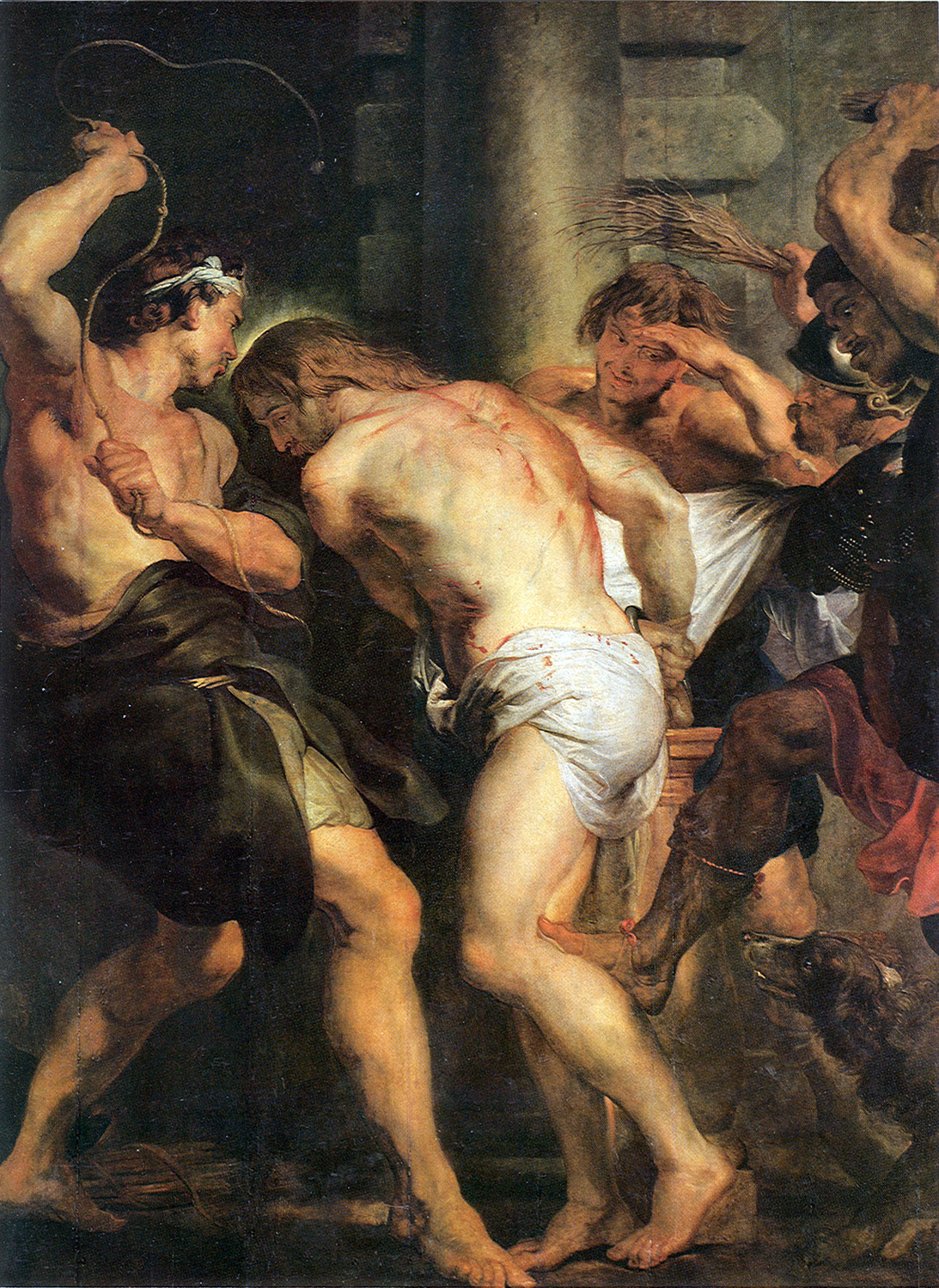 Then, just in case we doubted that this living sacrifice is the prayer of the Church, we read the next morning in the Office of Readings a commentary by St Augustine on Psalm 140, 1-2. The Psalm passage he is commenting on reads as follows:
Then, just in case we doubted that this living sacrifice is the prayer of the Church, we read the next morning in the Office of Readings a commentary by St Augustine on Psalm 140, 1-2. The Psalm passage he is commenting on reads as follows:
‘I call upon you O Lord, listen to my prayer, Give ear to the voice of my supplication when I call to you.
Let my prayer be counted as incense before you, And the lifting up of my hands as an evening sacrifice.’
Within the commentary he explicitly makes the connection between the sacrifice and prayer of the faithful as part of the body of Christ, that is, the liturgy. He also explains how the pain and anguish that Christ felt in his passion is due to His bearing our sins and agony. The blood that streamed over his body when experiencing the agony in the garden was not due to anxiety for himself but, says Augustine: ‘Surely this bleeding of all his body is the death agony of all the martyrs of his Church’. We have just had the Feast of the martyrs Perpetua and Felicity. What is so striking the account of their deaths (again given in the Office of Readings) is how cheerfully and gracefully they bore the grevious mutilations that eventually killed them. I wonder at their purity and cooperation with grace and I wonder also at the fact that this pain is what Christ is choosing to experience on their behalf.
Augustine goes on to encourage us by saying that this is available to all of us: ‘All of us can make this prayer; this is not merely my prayer; the entire Christ prays in this way. But it is made rather in the name of the body…The evening sacrifice, the passion of the Lord, the cross of the Lord, the offering of a saving victim, the whole burnt offering acceptable to God; that evening sacrifice produced in his resurrection from the dead, a morning offering. When a prayer is sincerely uttered by a faithful heart, it rises as incense rises from a sacred altar. There is no scent more fragrant than that of the Lord. All who believe must possess this perfume.’
Paintings by, from top: El Greco, Rubens and Titian
19th Century Visitation Academy in Frederick, Maryland
 Here are some photographs of the well preserved 19th century chapel of the Visitation Academy in Frederick, Maryland. Sitting on three-acres the Chapel and monastery were completed in 1852 and and the remaining school buildings a year later. The school describes the chapel as in the 'Corinthian' style. The main altar is crafted in marble and the oil painting above depicts the “The Presentation in the Temple”. Franz Mayer stained glass windows border the altar with images of the founders of the Visitation Order, St. Francis de Sales and St. Jane de Chantal. There is a temporary altar in the picture, but this is easily removed for ad orientem Masses if required.
Although the nuns have recently gone, the school remains. I have friends in Frederick whose children attend the school and they are working hard to keep it open. They have rededicated it to its Salesian educational mission, to the delight of the order based in Georgetown. Accordingly they have instituted the Salesian daily prayers to the Sacred Heart of Jesus and pausing for reflection during the day, the 'Salesian minute'. In order to raise money for the school and for the upkeep of the buildings, the chapel along with the courtyard is offered for hire and is appropriate particularly for weddings. So if anyone is interested contact Kirsten Tydings at 301-908 1366 or www.facebook.com/visitationacademyweddings.
Here are some photographs of the well preserved 19th century chapel of the Visitation Academy in Frederick, Maryland. Sitting on three-acres the Chapel and monastery were completed in 1852 and and the remaining school buildings a year later. The school describes the chapel as in the 'Corinthian' style. The main altar is crafted in marble and the oil painting above depicts the “The Presentation in the Temple”. Franz Mayer stained glass windows border the altar with images of the founders of the Visitation Order, St. Francis de Sales and St. Jane de Chantal. There is a temporary altar in the picture, but this is easily removed for ad orientem Masses if required.
Although the nuns have recently gone, the school remains. I have friends in Frederick whose children attend the school and they are working hard to keep it open. They have rededicated it to its Salesian educational mission, to the delight of the order based in Georgetown. Accordingly they have instituted the Salesian daily prayers to the Sacred Heart of Jesus and pausing for reflection during the day, the 'Salesian minute'. In order to raise money for the school and for the upkeep of the buildings, the chapel along with the courtyard is offered for hire and is appropriate particularly for weddings. So if anyone is interested contact Kirsten Tydings at 301-908 1366 or www.facebook.com/visitationacademyweddings.
The Need for Beauty and Form in Poetry
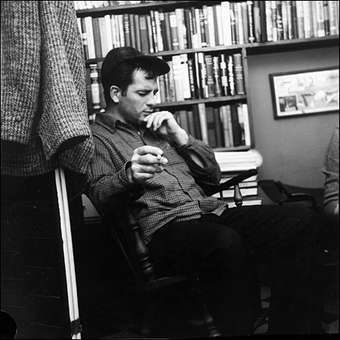 I want to say at the outset that, as a general rule, I hate poetry. In fact my idea of perfect hell is to spend an evening at a poetry recital. I say that this applies generally because occasionally some do strike a chord and I love the psalms, which I am told are poems. I chant and read them just about every day.
I am talking here about the sort of stuff that people who do English Lit study and feel the need, irritatingly, to talk about at dinner parties. It's all that analysis and discussion I can't stand. As soon as that happens I feel like running to the nearest television to watch an elevating game of football, or to a laptop to play a computer game (that is, if I knew how to play one).
I want to say at the outset that, as a general rule, I hate poetry. In fact my idea of perfect hell is to spend an evening at a poetry recital. I say that this applies generally because occasionally some do strike a chord and I love the psalms, which I am told are poems. I chant and read them just about every day.
I am talking here about the sort of stuff that people who do English Lit study and feel the need, irritatingly, to talk about at dinner parties. It's all that analysis and discussion I can't stand. As soon as that happens I feel like running to the nearest television to watch an elevating game of football, or to a laptop to play a computer game (that is, if I knew how to play one).
I was once told that when asked if he had any regrets Woody Allen said that he had one: he wished that he had never read Beowulf. Well I am one up on Mr Allen. I have never read it and have no intention of doing so. Most of the things that people want me to read, rather than revealing truth, seem to hide it behind a veil of long or obscure words and convoluted sentences; or even no sentences at all. If I make the effort to get past this and work out what they are on about or perhaps someone explains the meaning to me, like Mr Allen I usually regret having made the effort. My reaction is usually, well if that is what you are trying to say why make us wade through your turgid verse in order to do so? Why not just say it in a way we can understand?
Before anyone tries to contact me and tell me that I am a brutish and uncultured so-and-so then let me say that you are probably right. But I am unrepentant. You read poetry if you want to, I'll look at art, listen to music and go for country walks. I have no sense of any obligation to try to understand something that is written to entertain, when I don't find it entertaining.
Now that I've got that out of the way, I present an essay on form and beauty in poetry. It is not written by me you won't be surprised to hear, it is written by Mark Anthony Signorelli (h/t Tom Larson of Goffstown, NH). I present it because despite what I have just written I am prepared to acknowledge that I am an ignorant philistine in this regard and that poetry, or some of it at least, does have something to recommend it, even if usually I can't see it. I like this essay because the arguments he makes in regard to poetry correspond very closely to what I argue in regard to art. Put simply, he says that the best poetry is the most beautiful poetry because this will communicate truth most eloquently. I would say that this is the poetry that even when read by someone like me, strikes to the spirit and is understood intuitively. Signorelli argues that in order to be beautiful, the poet must take into consideration the form as well as the content. The form, that is, the style, reflects the worldview of the poet as much as the words contained within it. And traditional values are communicated through the medium of traditional form. This corresponds, I would argue, to the principles that apply in art. I have written about this in an article called Make the Form Conform - How the Style of Art Reflects Truth.
You can read Mr Signorelli's piece here, it is called Form and Transcendance: A Reply to Micah Mattix. Please do read it, even if you don't like poetry. It is well worth it!
I should say that beyond what it written here I know nothing about the site on which it appears or Mr Signorelli...except that this is what he looks like:
Giusto's Institution of the Eucharist
 This article is by Dr Caroline Farey of the Maryvale Institute. She and I worked together to design the Institute's degree level diploma (6 US credits): Art, Beauty and Inspiration in a Catholic Perspective. A distance learning course requiring one residential weekend, this can be taken either by application tothe Institute in Birmingham, England; or in the US through their centre based at the Diocese of Kansas City, Kansas (link here). Dr Farey writes:
This article is by Dr Caroline Farey of the Maryvale Institute. She and I worked together to design the Institute's degree level diploma (6 US credits): Art, Beauty and Inspiration in a Catholic Perspective. A distance learning course requiring one residential weekend, this can be taken either by application tothe Institute in Birmingham, England; or in the US through their centre based at the Diocese of Kansas City, Kansas (link here). Dr Farey writes:
Between 1465 and 1474, Giusto executed the Communion of the Apostles (The Institution of the Eucharist) which Vasari has described, and is now in the museum of Urbino. It was painted for the brotherhood of Corpus Christi at the bidding of Frederick of Montefeltro, who was introduced by Caterino Zeno, a Persian envoy at that time on a mission to the court of Urbino. Giusto is Joos van Wassenhove who was a Netherlandish painter, part of whose career was spent in Italy, where he was known as Giusto da Guanto (Justus of Ghent). He brought to Italy some of the characteristics of Dutch painting and combined them with the local Italian style.
This painting unites Jesus Christ, the Church and the Eucharist in a single harmonious illustration of the Catholic faith. It is perhaps important to begin with an initial teaching point: it is worth helping people realise that such a painting as this is has both an historical and a contemporary dimension to it. We do not need to believe, therefore, that the artist wishes us to see every part of the painting as an historical depiction. He is not necessarily wishing to communicate to us that the upper room really looked like this, or that the table was historically laid out like this, or that the apostles necessarily knelt to receive the body and blood of Christ as he has painted it here. Of course, they may have done. However, what the artist is also trying to show us in the painting is that what Christ did at the last supper with the apostles he, personally, still does for his disciples today at Mass.
One way to introduce this painting to those whom we are catechising is to begin by teaching about the Gospel accounts of the Last Supper from this piece of art. Then we can continue by explaining what the painting reveals about Mass today.
Christ at the Last Supper
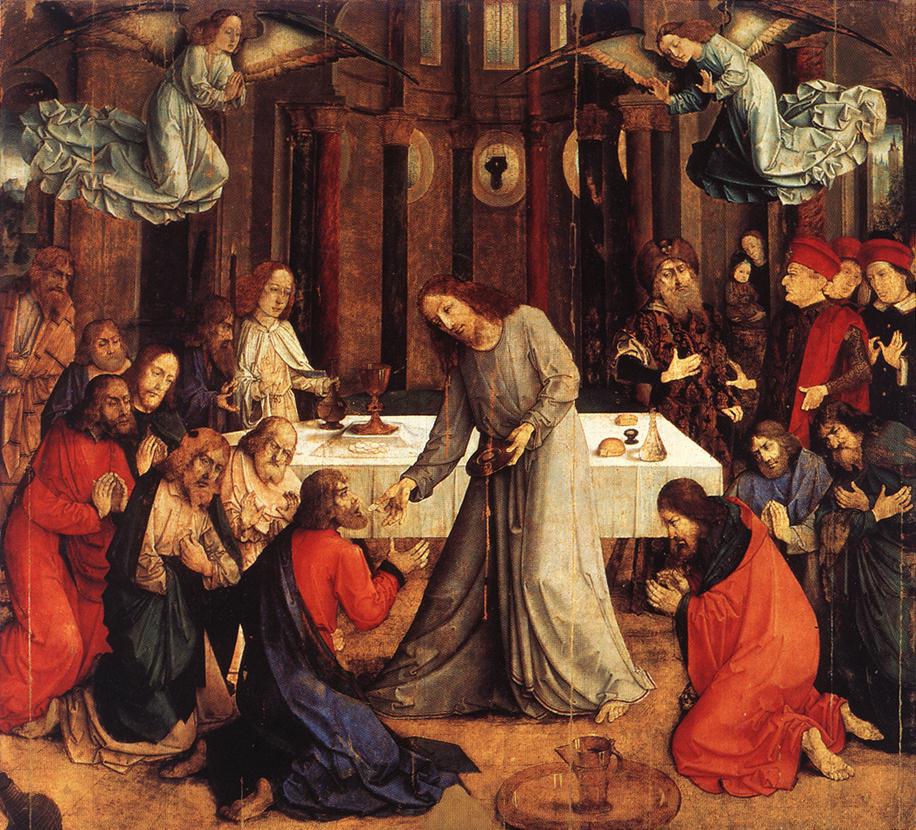 Let us look at this painting first of all as depicting an event in the life of Christ.For this we can follow the Gospel accounts, especially that of St Luke.
Let us look at this painting first of all as depicting an event in the life of Christ.For this we can follow the Gospel accounts, especially that of St Luke.
- In the Gospel of Luke chapter 22 we read that, during the Last Supper, a dispute arose amongst the disciples as to who was the greatest. Jesus replied to them ‘which is the greater, one who sits at table or one who serves? Is it not the one who sits at table? But I am among you as one who serves’(Lk 22:27).Much in this painting depicts this dialogue. The Persian in the turban and the members of the confraternity in the red hats are disputing and Christ is portrayed as the one who is not sitting at table now but is among his disciples, serving.Look at the bending figure of Christ, beautifully depicting the reality of Christ the Servant.
- We can also see here an artistic depiction of the central truth of the Faith, that God condescended to be born and to live among us, that the divine Second Person of the Trinity took flesh for our sake In the General Directory for Catechesis the part on the Pedagogy of God opens with a quotation from Hosea, ‘I became to them as one who eases the yoke on their jaws, and I bent down to them and fed them’ (Hos 11:4, in GDC 137). The bending figures of the apostles around Christ also emphasises this mystery. By contrast, the Persian in the turban stands erect, with his head and shoulders thrown back. The painting is also showing us the amazing truth that Christ only ever serves himself to us – ‘This is my Body’. The Church, in her Tradition, follows this truth without deviation, accepting that Christ gives his whole self to us.
- Christ, the one who serves, is portrayed as ‘greater’ by his stature and centrality in the picture. You can see that Christ is painted disproportionately larger in height than any other figure.
- Directly in front of Christ on the floor we can see the jug of water and basin.The Gospel of Lukes tell us that the disciples were to meet a man carrying a jar of water and to follow him into the house which he enters (Lk 22:10).
- John’s Gospel also links the Last Supper scene to water: ‘He rose from supper, laid aside his garments …poured water into a basin and began to wash the disciples’ feet’ (Jn 13: 4-5). It seems that in this painting this may have already happened – look at the bare feet in the picture!
- John’s Gospel also speaks of Judas as the one with the money box, or bag (Jn 13:29), and we can see him in this painting clutching a moneybag in both hands, looking back into the room as he edges out of the open doorway into the night with dawn breaking already in the distance.
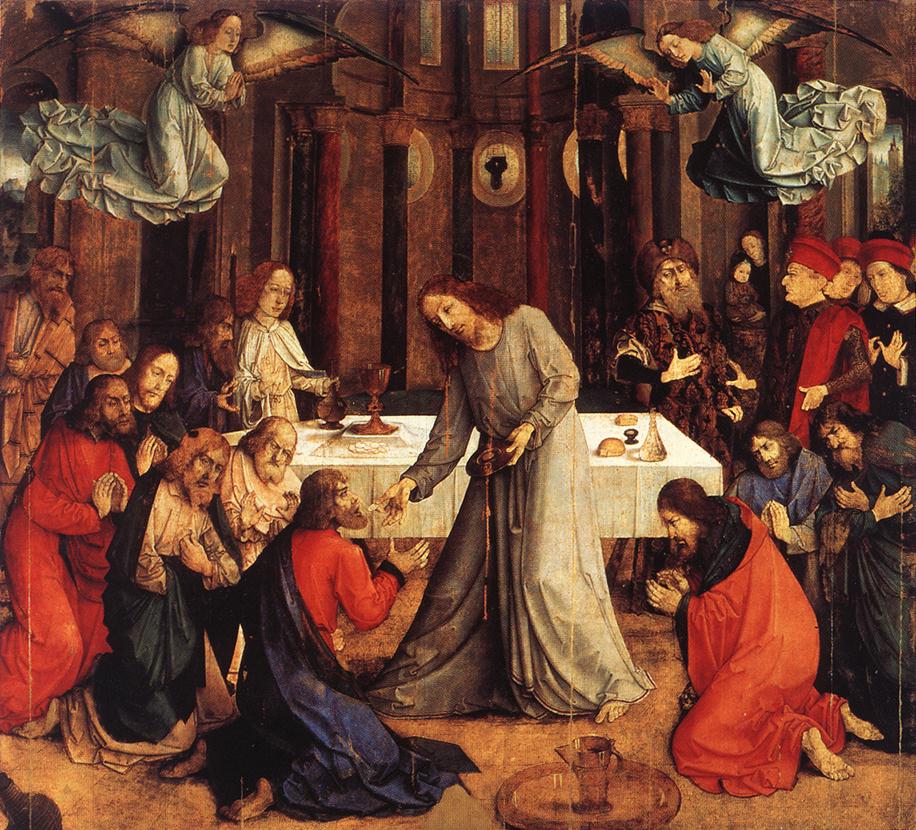 Eleven reverent apostles remain, three kneeling on the right and eight on the left. One in white at the back, perhaps the young John, still holds a bottle as though he had been serving, too, with his other hand raised as he gazes adoringly at Christ.
Eleven reverent apostles remain, three kneeling on the right and eight on the left. One in white at the back, perhaps the young John, still holds a bottle as though he had been serving, too, with his other hand raised as he gazes adoringly at Christ.
- The one next to him is quite different. See how he seems to be staring intently at the disputants.He is holding a lighted candle, representing perhaps the light of faith, of truth, of Christ. He has seen the truth of Christ as the greater who has come among them as a servant and longs for the disputants to be enlightened by this same truth!
Christ in His Church
Let us look now for every indication that the painter is portraying Christ as present and active in his Church. What does the picture tell us about the Mass as it is celebrated in the Church?
·The building is the first sign, with its pillars and its windows portrayed like the apse of a Cathedral Church.
·The sanctuary lamp hangs directly above the figure of Christ, in shadow in the central round window between the pillars of the apse where the tabernacle would usually be found.
·The table is painted as though an altar, and the chalice and sacred hosts are placed as though on the altar at Mass.
·The apostle in white at the back on the left hand side acts like a server acolyte at Mass and the one beside him carries a tall candle.
·The jug and basin directly in front of Jesus remind the congregation of the sprinkling of water that can take place before mass on Sunday to remind us of our Baptism.
·Christ takes up the position that we normally associate with the priest.The priest is called ‘in persona Christi’, ‘in the person of Christ’ at this moment of distribution of the sacred species and throughout the Mass.
- The apostles are painted kneeling and receiving the body of Christ on the tongue, as they would have done for most of the Church’s history until recently, as a sign of the holiness of the moment, hence the use for many centuries of the name ‘holy communion’.
This is the greatest moment possible on this earth of communion with Jesus, the Son of God, and it is the holiest moment possible, receiving the body and blood of Christ himself. The angels kneeling and adoring above the scene help to indicate this holiness.
Two Icons by Kathy Sievers
 Kathy Sievers teaches at an icon painting teaching program that takes place regularly at Mt Angel Abbey in Oregon (close to where she lives). She also teaches in Illinois and Florida. You can see more of her work at her website, here and more about the Mt. Angel program here
A few things caught my eye about these two icons is the lovely rhythm and grace of the lines. As well as have that calligraphic flow in the abstract, they do describe form well (without deviating from the iconographic style); so that, for example, we can read the folding of the cloth and how it relates the form underneath very easily. This is the mark of a good draughtsman. Also, look at how she has modelled the form. She appears to do a base layer in quite mottled paint - probable quite a thin single layer of paint (I'm guessing) as a wet puddle of quite dilute paint. This evapourates unevenly an so creates that mottled effect as the white gesso underneath shows through more in some parts than others. Then she paints the mid-tones and highlights on top of that. These are much denser, opaque layers of paint. The overall effect is very attractive, I think. I am painting a large Christ in Majesty at the moment and want to paint a blue robe. I have been looking at different ways of doing this, and Kathy is giving me some pointers through her work.
Kathy Sievers teaches at an icon painting teaching program that takes place regularly at Mt Angel Abbey in Oregon (close to where she lives). She also teaches in Illinois and Florida. You can see more of her work at her website, here and more about the Mt. Angel program here
A few things caught my eye about these two icons is the lovely rhythm and grace of the lines. As well as have that calligraphic flow in the abstract, they do describe form well (without deviating from the iconographic style); so that, for example, we can read the folding of the cloth and how it relates the form underneath very easily. This is the mark of a good draughtsman. Also, look at how she has modelled the form. She appears to do a base layer in quite mottled paint - probable quite a thin single layer of paint (I'm guessing) as a wet puddle of quite dilute paint. This evapourates unevenly an so creates that mottled effect as the white gesso underneath shows through more in some parts than others. Then she paints the mid-tones and highlights on top of that. These are much denser, opaque layers of paint. The overall effect is very attractive, I think. I am painting a large Christ in Majesty at the moment and want to paint a blue robe. I have been looking at different ways of doing this, and Kathy is giving me some pointers through her work.
Liturgy and Anthropology: Body, Soul, Spirit
 Understanding that man is body, soul and spirit might be step towards establishing a culture of beauty. I have written before, here of the idea that liturgy and culture are linked. Each forms and reflects the other. If this is the case, then the answer to the question of how to reform a culture of ugliness, even a culture of death in any lasting way has its roots in, or at least must include firmly at its heart, liturgical reform.
Understanding that man is body, soul and spirit might be step towards establishing a culture of beauty. I have written before, here of the idea that liturgy and culture are linked. Each forms and reflects the other. If this is the case, then the answer to the question of how to reform a culture of ugliness, even a culture of death in any lasting way has its roots in, or at least must include firmly at its heart, liturgical reform. I read recently Looking Again at the Question of the Liturgy with Cardinal Joseph Ratzinger: the Proceedings of the July 2001 Fontgombault Liturgical Conference, edited by Alcuin Reid. One of the presentations was by Stratford Caldecott, who runs the Thomas More College Centre for Faith and Culture in Oxford. Mr Caldecott argues that the problems lay in the fact that the anthropology - the understanding of the nature of man - had strayed from a full recognition of the spirit as part of the anthropology described by scripture. St Paul for example, talks of body, soul and spirit. There had been tendency argues Caldecott, to equate, or at least insufficiently differentiate between (in our understanding), soul and spirit. (His presentation is online, at the Second Spring website, here. Go to the section on the left that says 'online reading' and then click the title of the article: Liturgy and Trinity; Towards a Liturgical Anthropology.)
I read recently Looking Again at the Question of the Liturgy with Cardinal Joseph Ratzinger: the Proceedings of the July 2001 Fontgombault Liturgical Conference, edited by Alcuin Reid. One of the presentations was by Stratford Caldecott, who runs the Thomas More College Centre for Faith and Culture in Oxford. Mr Caldecott argues that the problems lay in the fact that the anthropology - the understanding of the nature of man - had strayed from a full recognition of the spirit as part of the anthropology described by scripture. St Paul for example, talks of body, soul and spirit. There had been tendency argues Caldecott, to equate, or at least insufficiently differentiate between (in our understanding), soul and spirit. (His presentation is online, at the Second Spring website, here. Go to the section on the left that says 'online reading' and then click the title of the article: Liturgy and Trinity; Towards a Liturgical Anthropology.)It strikes me that such a neglect as a result of the Enlightenment should result in a cultural decline as well as a liturgical decline is made all the more understandible when one considers the role of the intellectus, or spirit, in the apprehension of beauty. In the first part of her little essay Beauty, Contemplation and the Virgin Mary, Sister Thomas Mary McBride, OP describes succinctly in just a few paragraphs, the traditional understanding of beauty and how man apprehends it (and as such I would recommend this piece for anyone seeking an introduction to this subject). She draws on the Latin medievals and states that beauty illuminates the intellectus, describing the apprehension of beauty as the 'gifted perfection of seeing'. Then echoing Caldecott in the connection between intellectus and spirit says: 'In the light of the above, this writer would suggest that the proper place of beauty is in the spirit.'
An appropriate active participation in the liturgy is one that engages the full person in order to encourage within us the right interior disposition. Any participation in the liturgy that does not engage body, soul and spirit therefore does not engage the full person. Our participation in the liturgy is the primary educator in the Faith at all levels. A true conformity of body, soul and spirit is what is desired. One can see that any participation in which consideration of the spirit is neglected (through a balanced active participation of soul and body) will result in therefore necessarily result in a deficiency in our ability to apprehend beauty, which resides in the spirit. This explains this link between culture and liturgy and how important liturgical reform is in our efforts to create a culture of beauty today.
St Ephrem the Syrian who lived in the 4th century AD in modern-day Turkey is a Doctor of the Church and one of the Church Fathers referred to by Pope Benedicti XVI in one of his weekly addresses and whom he encouraged us to read. St Ephrem wrote the following in the 9th of his Hymns to Paradise:
Far more glorious than the body is the soul, and more glorious still than the soul is the spirit, but more hidden that the spirit is the Godhead.
At the end, the body will put on the beauty of the soul, the soul will put on that of the spirit, while the spirit shall put on the very likeness of God's majesty.
For bodies shall be raised to the level of souls, and the soul to that of the spirit, while the spirit shall be raised to height of God's majesty;
Harmonious Proportion in the Architecture of Annapolis, Maryland
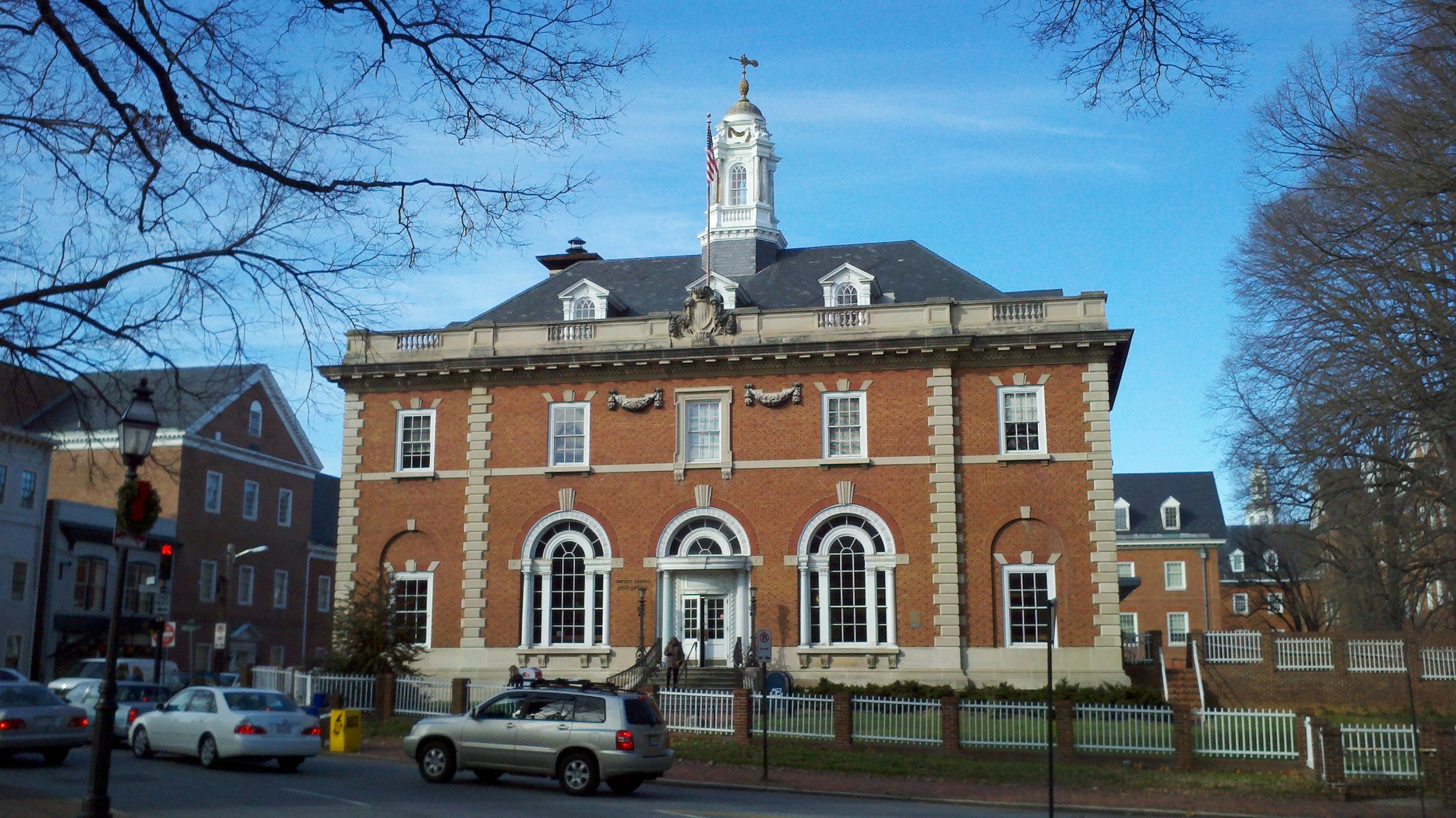 Here are some photographs of buildings and streets in Annapolis, Maryland.
Annapolis is the state capitol and one of the oldest cities in the US. In common with all state capitals it has at its centre a domed capitol building which is the home of the state government. It has a large number of houses in the colonial style. What interests me is that many of the buildings still display the classic threefold proportion. Have a look at the window sizes particularly and you see that rhythmical progression of gradually decreasing size as you go up for three layers (or more), with the first relating the second and the second relating to the third. Many houses from this period have had the windows replaced in standard sizes as the wooden frames rot. Double glazing usually comes in standard sizes and these do not correspond to the traditional range of proportions. When this is done it destroys so much of the beauty of the old houses.
Here are some photographs of buildings and streets in Annapolis, Maryland.
Annapolis is the state capitol and one of the oldest cities in the US. In common with all state capitals it has at its centre a domed capitol building which is the home of the state government. It has a large number of houses in the colonial style. What interests me is that many of the buildings still display the classic threefold proportion. Have a look at the window sizes particularly and you see that rhythmical progression of gradually decreasing size as you go up for three layers (or more), with the first relating the second and the second relating to the third. Many houses from this period have had the windows replaced in standard sizes as the wooden frames rot. Double glazing usually comes in standard sizes and these do not correspond to the traditional range of proportions. When this is done it destroys so much of the beauty of the old houses.
Annapolis is the home of the US naval officers college and and old port.
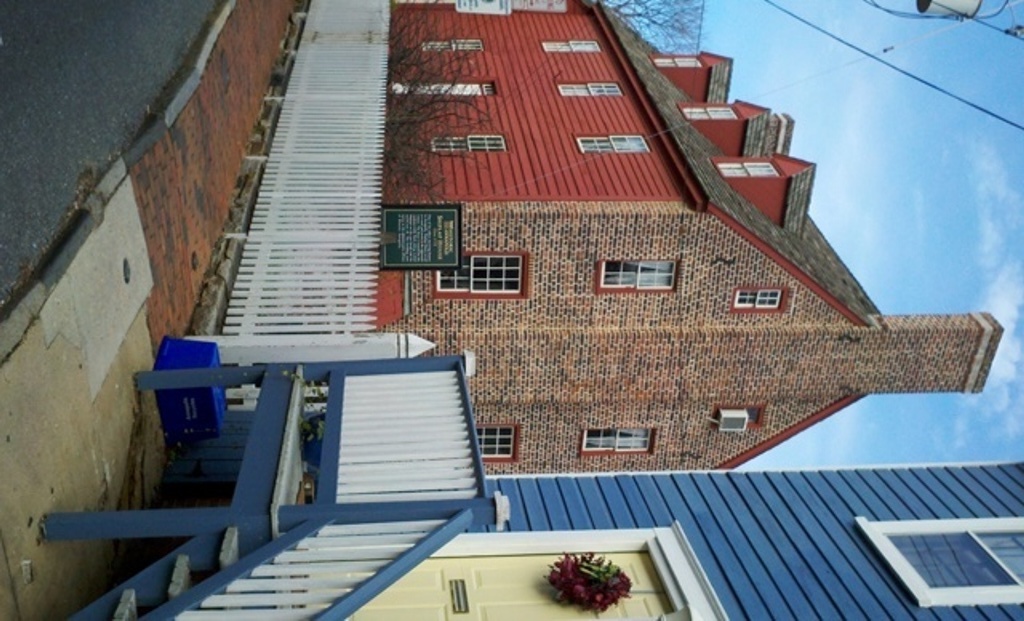 The proportions of these buildings are derived from those used by the ancient Greeks which were subsequently used by the Romans and then Christian culture up to about 1900.American colonial architecture is similar to the British Georgian style, which is based upon Italian Palladian architecture of the High Renaissance. The proportions for this came from the rediscovery of a text book on architecture written by a Roman architect called Vitruvius. The Roman text book was published in England in the 17th century, in translation (although given a Latin title) under the name 'Vitruvius Brittanicus'. As a British colony, this style was used in America (with the addition of French style window shutters!) and then retained after independence.
The proportions of these buildings are derived from those used by the ancient Greeks which were subsequently used by the Romans and then Christian culture up to about 1900.American colonial architecture is similar to the British Georgian style, which is based upon Italian Palladian architecture of the High Renaissance. The proportions for this came from the rediscovery of a text book on architecture written by a Roman architect called Vitruvius. The Roman text book was published in England in the 17th century, in translation (although given a Latin title) under the name 'Vitruvius Brittanicus'. As a British colony, this style was used in America (with the addition of French style window shutters!) and then retained after independence.
If there are any architects reading this who are looking to make a name for themselves, then take note. A modern building could as easily be built using these proportions as any other, and the beauty of the buildings that use them always attracts attention. So any architects reading this, here is a way of raising your reputation as an architect, and adding value to buildings at very little extra cost.
It's not always possible to have three storeys in a house - but even if you have two, the basement window is made (through the size of the glass panels within it) to look as though we are seeing the top section of a much larger window that projects below ground, so mainting this sense of threefold rhythm.
You can see the state government house in the distance with the dome.
Actually (just in case any were going to comment on the fact) this isn't in Annapolis, but in Frederick, Maryland, which is smaller town of similar age. I took these photos on the same trip to Maryland.
Learn to Live the Way of Beauty at Thomas More College
 The Summer Program 2012 of the Way of Beauty Atelier at Thomas More College of Liberal Arts, Merrimack, NH. We are pleased to be offering three courses this summer - an icon painting week and two weekend retreats - Traditional Paths to Creativity and Inspiration. (Follow the links just given to apply) No experience or specialist knowledge is necessary for any of these courses. They take place in July 2012.
Both retreats offered teach about the forms of traditional art focussing on the baroque, the gothic and the iconographic, and how to pray with visual imagery especially in the context of the Mass and the Liturgy of the Hours. The weekend is lived in conformity to the rhythm of the Church's liturgy. However, the emphasis is different in each one.
The Summer Program 2012 of the Way of Beauty Atelier at Thomas More College of Liberal Arts, Merrimack, NH. We are pleased to be offering three courses this summer - an icon painting week and two weekend retreats - Traditional Paths to Creativity and Inspiration. (Follow the links just given to apply) No experience or specialist knowledge is necessary for any of these courses. They take place in July 2012.
Both retreats offered teach about the forms of traditional art focussing on the baroque, the gothic and the iconographic, and how to pray with visual imagery especially in the context of the Mass and the Liturgy of the Hours. The weekend is lived in conformity to the rhythm of the Church's liturgy. However, the emphasis is different in each one.
The first weekend is a repeat of what we offered last year and has a greater emphasis on the talks about the culture.
The second is more reflective and focusses more on the prayer, chant and contemplation of visual imager. It would be of interest to anyone, but was created in response to those who attended the first retreat last year and wanted to repeat the experience, but didn't want the same same lectures. So this is of a form that can be repeated year on year if you wish: I will pick out particular paintings to talk about as exemplars of each tradition; and we will spend more time learning the techniques of the prayer of the whole person including chant. As such, the hope is that anyone who has been through this would be able to teach members of their family or parish to chant the liturgy of the hours. No one need feel worried that they do not have the required musical ability. The chant is simple enough so that anyone who can approximately hit a note can learn it through listening; and beautiful enough that they want to.
The Symbolic Content of Rembrandt's Holy Family, by Dr Caroline Farey of the Maryvale Institute
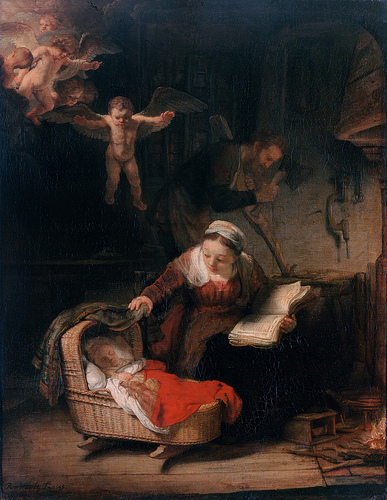 This short posting, which focusses on the symbolic content in a painting is written by Dr Caroline Farey of the Maryvale Institute. She and I work as a double team, teaching in July at the residential weekend of the one-year distance-learning course about Catholic art and culture called Art, Beauty and Inspiration in a Catholic Perspective. This is the first a series on the symbolic content on art by Caroline and Dr Lionel Gracey, also of the Maryvale Institute.
The Maryvale Institute is the only Pontifically recognised Higher Institute of Religious Sciences in the English speaking world and the course, in distance learning form with one residential weekend is offered through its base in Birmingham, England and in the US in Kansas City through the Maryvale Center at the Diocese of Kansas City, Kansas. For further information go here.
This short posting, which focusses on the symbolic content in a painting is written by Dr Caroline Farey of the Maryvale Institute. She and I work as a double team, teaching in July at the residential weekend of the one-year distance-learning course about Catholic art and culture called Art, Beauty and Inspiration in a Catholic Perspective. This is the first a series on the symbolic content on art by Caroline and Dr Lionel Gracey, also of the Maryvale Institute.
The Maryvale Institute is the only Pontifically recognised Higher Institute of Religious Sciences in the English speaking world and the course, in distance learning form with one residential weekend is offered through its base in Birmingham, England and in the US in Kansas City through the Maryvale Center at the Diocese of Kansas City, Kansas. For further information go here.
Caroline writes:
The Holy Family by Rembrandt
In this painting we ponder particularly on Our Lady, as Mother of God, Mother of the saviour of the world, Mother of her Son.We can discern a triple revelation here.
The first act of revelation is from the Old Testament Scriptures to Mary.The light picks out the eager attentionon Mary’s young face and on the Scriptures that she is reading. Mary has suddenly but quietly turned in her chair from the text she has been reading to the fulfilment of those words that she now contemplates as ‘made flesh’ in the basket cot beside her.The Scriptures are telling her who her Son is.
But both her face and the book have parts in shadow too. Similarly Christ’s face is part in shadow and part illuminated.The shadows remind us of the shadow of the suffering and death he will endure, as she will, suffering foretold also in the Jewish Scriptures – the Old Testament.
The second act of revelation is by Mary to the world.She holds back a richly embroidered veil: by this she reveals Christ to us the onlookers.Mary has a place in God’s revealing of his Son.
The third act of revelation is by the sleeping child himself. In his sleep, he holds back a bright red coverlet revealing a lining of lamb’s fleece. Christ reveals himself, even as an infant fast asleep.The red coverlet, as we have seen in paintings before, flows over the edge like blood poured out, and it is highlighted further in its brightness in its juxta-positioning against the richly deep red of Mary ‘s skirt. Mary and the child both wear red. By the fleece Jesus is revealing himself as the lamb of God who is to be led silently to the slaughter.
The revelation taking place at the centre of the painting, through an interplay of light and movements, cloths and colours, is reinforced by other details surrounding Mary and the crib.Firstly, of course in the top left hand corner are the angels bursting in on the scene revealing to us that this is no ordinary carpenter’s child.Where are they looking? One is looking lovingly at Mary, the other looking soberly at the baby.Diagonally opposite the angels in the bottom right hand corner is the fire which, together with the angels is the main source of diffused light across the bare boards of the floor and the barren wall behind, with what look like further parts of the yoke being made by Joseph.A contemplative scene, which, despite looking so humble and ordinary is nonetheless imbued throughout by the grace of the Incarnation of the Son of God through Mary, Theotokos, Mother of God.
A Course about Traditional Proportion in Architecture, by Geoff Yovanovic
 Geoff Yovanovic is a young architectural intern (with an architecture degree from the University of Miami who came to our Way of Beauty summer program last year. He recently attended a course of proportion run by the ICAA (The Institute of Classical Architecture called Theory of Proportion: A Perennial Pathway of Beauty. What he described sounded interesting so I asked him to give us a brief write up about it. If you want to know more about this, then do contact him on g.yovanovic@gmail.com. He is especially keen to here from any architects working in a traditional field who are looking to take on an intern!
Before we read it a couple of things are worth pointing out. First that word 'Perennial'. This is referring here to a particular worldview - the Perennialist philosophy. This is a modern analysis of traditional cultures which seeks common principles based upon the premise that each is offering alternative routes to the same God. Perennialists tend to join one religion or school of thought and take a traditionalist path, in order to follow what they seek to be the pure, original revelation, as it was presented before man diluted it. I have met Christian, Islamic and even Platonist perennialists. In my experience, Plato and Platonists such as Plotinus, are presented as authorities. However, for all the fact that they outwardly look like very traditionalist adherents to a religion to the degree that they hold to the perennialist philosophy, they sit outside the religions that they claim to follow (certainly this true for Christianity).
Geoff Yovanovic is a young architectural intern (with an architecture degree from the University of Miami who came to our Way of Beauty summer program last year. He recently attended a course of proportion run by the ICAA (The Institute of Classical Architecture called Theory of Proportion: A Perennial Pathway of Beauty. What he described sounded interesting so I asked him to give us a brief write up about it. If you want to know more about this, then do contact him on g.yovanovic@gmail.com. He is especially keen to here from any architects working in a traditional field who are looking to take on an intern!
Before we read it a couple of things are worth pointing out. First that word 'Perennial'. This is referring here to a particular worldview - the Perennialist philosophy. This is a modern analysis of traditional cultures which seeks common principles based upon the premise that each is offering alternative routes to the same God. Perennialists tend to join one religion or school of thought and take a traditionalist path, in order to follow what they seek to be the pure, original revelation, as it was presented before man diluted it. I have met Christian, Islamic and even Platonist perennialists. In my experience, Plato and Platonists such as Plotinus, are presented as authorities. However, for all the fact that they outwardly look like very traditionalist adherents to a religion to the degree that they hold to the perennialist philosophy, they sit outside the religions that they claim to follow (certainly this true for Christianity).  It can be confusing at times, because they will draw heavily on the authorities of the religion in question when it is consistent with the philosophy (for example often citing scripture) but in their own interpretation (through a perennialist prism so to speak), and not fully consistent with the magisterium (although they will often give the impression that they are in agreement with each religions). The people to look for who formulated this perennialist outlook are names such as Titus Burckhardt, Rene Guenon, Ananda Coomeraswamy and Frithjof Schuon. Because of their great respect for tradition and the religions of the world, they have done much good work in redirecting many genuine adherents to their own traditions. For example, It was perennialists at the Prince of Wales's school of tradition arts in London who made me aware of traditional Christian ideas of harmony and proportion. The teacher of the course below, incidentally, was taught at the Royal College of Art in London by the founder and first principal of the Prince's School.
It can be confusing at times, because they will draw heavily on the authorities of the religion in question when it is consistent with the philosophy (for example often citing scripture) but in their own interpretation (through a perennialist prism so to speak), and not fully consistent with the magisterium (although they will often give the impression that they are in agreement with each religions). The people to look for who formulated this perennialist outlook are names such as Titus Burckhardt, Rene Guenon, Ananda Coomeraswamy and Frithjof Schuon. Because of their great respect for tradition and the religions of the world, they have done much good work in redirecting many genuine adherents to their own traditions. For example, It was perennialists at the Prince of Wales's school of tradition arts in London who made me aware of traditional Christian ideas of harmony and proportion. The teacher of the course below, incidentally, was taught at the Royal College of Art in London by the founder and first principal of the Prince's School.
Second, consistent with the fact that this is a modern philosophy they will tend, in my view, to overemphasise the importance of the Golden Section in traditional design. Those who are interested to more about my views on this can read the article 'Golden or Fallen - a Note on Phi' in the articles page of this blog.
With these caveats in mind, the course Geoff describes seems to be worthy of consideration. Here is what he wrote:
'I attended recently a one day intensive on the theory of proportion presented by the Institute of Classical Architecture and Art. It was called Theory of Proportion: A Perennial Pathway of Beauty. The ICAA describes itself as an organization which is "dedicated to advancing the classical tradition in architecture, urbanism and their allied arts". With chapters throughout the USA, the ICAA presents educational opportunities ranging from the Beaux Arts Atelier in New York City to walking tours through historic neighborhoods to a variety of classes like the one on proportion which I attended in Atlanta hosted by the Southeast Chapter.
The intensive was taught by Steve Bass an architect from New York City, and a Fellow at the Institute of Classical Architecture and Art. Mr. Bass was trained in the modern practice of architecture, but soon found it empty, he told us, and searched for a deeper meaning in design. This lead to study at the Royal College of Art in London which has a focus on the ancients such as Plato and Plotinus (a Platonist from the 3rd century AD) and their ideas on geometry, presented through the prism of the modern Perennialist philosophy.
Starting with a rapid survey of ancient history and philosophy, the class soon settled on a discussion of beauty and its importance. Drawing from the writings of Plotinus, connections were quickly made between beauty and the good: "This is the soul's ugliness, not being pure and unmixed, like gold, but full of earthiness; if anyone takes the earthy stuff away the gold is left and is beautiful, when it is singled out from other things and is alone by itself."
For the ancient Greek, described by Plotinus, beauty was the memory of unity. It was the joyous state of the soul as it remembers unity. In our Christian tradition, beauty is our recognition of God.
The foundation for the rest of the class was laid with an introduction classical number theory described in detail by Plato and attributed to Pythagoras. Using this theory and tying it to Genesis and Plato's Timaeus, Mr Bass presented a symbolic story of creation using the arithmetical ideas of the monad, oneness, the dyad, twoness, the triad, threeness, and on through the decade. For example, fourness or the tetrad was connected with the fourth day of creation in Genesis. On the fourth day, "God said, Let the waters under the heaven be gathered together unto one place, and let the dry land appear." Geometrically, the tetrad or fourness is represented by the four sided polygon or a square. Applying these theories into recognizable form in architecture, we can look at a dome in a church especially an early Christian church such as the Hagia Sophia. A dome is a sphere resting upon a cube. In an even simpler geometric study, we see a circle and a square. Geometrically, the dome is composed of a square, the tetrad, meeting a circle, the monad. Applying Genesis to the dome in a church, a dome is the location where heaven, the monad or oneness, meets the dry land, the tetrad or square. Therefore, the geometry symbolizes the meeting of Heaven and earth, or the meeting of the Communion of Saints which occurs during each Mass. In some early churches, this union of Heaven and earth was emphasized by the decoration on the pendentives which were the four triangular transition supports between the vertical columns and the dome. Depictions of this unity such as the Annunciation of Mary, the Nativity, and other Christmas scenes were painted on the pendentives to emphasize this symbolic geometric parallel.
The class transitioned into a study of the evolution of different geometric creations and their integration into architecture. From a circle, different geometric creations were derived such as the 45-45-90, 30-60-90 triangles, .618 or phi, and finally arriving at the golden section. Using the golden section as the primary tool, it was proposed that the ancient Greek temples were designed through geometric derivations of a circle. Demonstrations using a few simple drafting tools such as a 45 degree triangle, a compass, and a scaler showed the evolution of a Doric, Ionic, and Corinthian temple originating from a circle. The entire temple from the overall recognizable temple form to the acanthus leaves in the Corinthian capital were derived starting with a single circle.
While the primary goal of the class was to emphasize the importance of beauty in design, it was not presented through a Christian perspective. It focused on many ancient ideas which, for a large part, were eventually baptized by St. Augustine and integrated into Christian thought. Despite the differences, both schools of thought present proportion and geometry as a path to beauty. And beauty is an essential thing.

Murals by John Singer Sargent at Boston Public Library
 Yes really, I do mean at the Boston Public Library. It is quite a surprise to go into the public library and find a wonderful set of murals painted by the great American artist. One room has a huge set of murals on an Arthurian theme and then right at the top of the building is a room that the library calls quite simply 'Sargent Hall'. This are adorned with a set of Christian sacred imagery all conforming to a unifying schema.I had heard about them before but only this past month have I seen them for the first time. They are oil on canvas set into the wall, with some painted plaster cast reliefs and were painted in a 20 year period from 1895. What surprised me was how Catholic the imagery is for civic buildings. Boston's Irish Catholic heritage is well known, but I hadn't anticipated that this Catholic influence would have reached up to the level of the dignitaries of the city at this time. Perhaps there is a high Episcopalian influence here as well?
We have murals of the Old Testament prophets, of the crucifixion with the a representation of the dogma of the Trinity and angels carrying the instruments of the passion, Our Lady of Sorrows and the 15 mysteries of the rosary. Apparently when artistic tastes turned against the naturalistic style around the early middle 20th century, they were almost destroyed. Luckily for us were saved and the suggestion to paint over them was opposed.
If these had been painted in England at the same time by any other artist, they would most likely have been in the pre-Raphaelite, and indeed there is some of that feel about them. However, Sargent, who is vastly superior to the English pre-Raphaelites, in my opinion, brings his knowledge of the 17th century baroque (which is the authentic liturgical root of the Western naturalistic tradition) into play. So just we would have seen in this earlier original period, we see in Sargent's work here the controlled intensification and depletion of colour; and variation in focus, carried out selectively to ensure that our eyes are drawn first to the most important points in each composition. The pre-Raphaelites in contrast painted with sharp outlines and even colour and so they overburdened their paintings with detail.
Yes really, I do mean at the Boston Public Library. It is quite a surprise to go into the public library and find a wonderful set of murals painted by the great American artist. One room has a huge set of murals on an Arthurian theme and then right at the top of the building is a room that the library calls quite simply 'Sargent Hall'. This are adorned with a set of Christian sacred imagery all conforming to a unifying schema.I had heard about them before but only this past month have I seen them for the first time. They are oil on canvas set into the wall, with some painted plaster cast reliefs and were painted in a 20 year period from 1895. What surprised me was how Catholic the imagery is for civic buildings. Boston's Irish Catholic heritage is well known, but I hadn't anticipated that this Catholic influence would have reached up to the level of the dignitaries of the city at this time. Perhaps there is a high Episcopalian influence here as well?
We have murals of the Old Testament prophets, of the crucifixion with the a representation of the dogma of the Trinity and angels carrying the instruments of the passion, Our Lady of Sorrows and the 15 mysteries of the rosary. Apparently when artistic tastes turned against the naturalistic style around the early middle 20th century, they were almost destroyed. Luckily for us were saved and the suggestion to paint over them was opposed.
If these had been painted in England at the same time by any other artist, they would most likely have been in the pre-Raphaelite, and indeed there is some of that feel about them. However, Sargent, who is vastly superior to the English pre-Raphaelites, in my opinion, brings his knowledge of the 17th century baroque (which is the authentic liturgical root of the Western naturalistic tradition) into play. So just we would have seen in this earlier original period, we see in Sargent's work here the controlled intensification and depletion of colour; and variation in focus, carried out selectively to ensure that our eyes are drawn first to the most important points in each composition. The pre-Raphaelites in contrast painted with sharp outlines and even colour and so they overburdened their paintings with detail.
 It is very difficult to manage complicated compositions with many figures Sargent handles the variation of these components so brilliantly and subltely that I find it difficult characterise further what he is doing beyond knowing that he is doing it.
The room, which is just a 3rd floor hall in the library leading to others containing library books, is difficult to photograph and so I give you the best I have been able to get hold of. One thing to point out about the style is that even though Sargent was trained as portrait painter, he seems to have understood the difference between sacred art and portraiture. The faces are less emotional and quite often placed in shadow, allowing us to identify with the general human characteristics of the person portrayed. This is in contrast to other sacred art of the 19th century and in accord with what a master of the 17th century, such as Zurburan, would have done. I have talked about this in more detail in an article called Is Some Sacred Art Too Naturalistic? We can see this brought out especially in the sketches for one of the mysteries of the rosary. The ones shown are for the finding of the boy Jesus in the temple.
As I studied these I was trying to picture these as a focus of prayer if they had been placed in a church. My personal taste in this regard is for the iconographic or gothic, so I am not the best person to make a judgement here, but my sense is that for those who are strongly attracted to the baroque style as liturgical art, these would seem appropriate and helpful. Certainly, I think that those Catholic artists who are interested in painting sacred art and have been trained in the academic method should study Sargent's style, which owes so much to the earlier 17th century form. This will help them to avoid the trap of imitating inferior artists of the late 19th century such as the aforementioned pre-Raphaelites and William Bougeureau (the reason that his style should be avoided, in my opinion, is described in the article linked above).
It is very difficult to manage complicated compositions with many figures Sargent handles the variation of these components so brilliantly and subltely that I find it difficult characterise further what he is doing beyond knowing that he is doing it.
The room, which is just a 3rd floor hall in the library leading to others containing library books, is difficult to photograph and so I give you the best I have been able to get hold of. One thing to point out about the style is that even though Sargent was trained as portrait painter, he seems to have understood the difference between sacred art and portraiture. The faces are less emotional and quite often placed in shadow, allowing us to identify with the general human characteristics of the person portrayed. This is in contrast to other sacred art of the 19th century and in accord with what a master of the 17th century, such as Zurburan, would have done. I have talked about this in more detail in an article called Is Some Sacred Art Too Naturalistic? We can see this brought out especially in the sketches for one of the mysteries of the rosary. The ones shown are for the finding of the boy Jesus in the temple.
As I studied these I was trying to picture these as a focus of prayer if they had been placed in a church. My personal taste in this regard is for the iconographic or gothic, so I am not the best person to make a judgement here, but my sense is that for those who are strongly attracted to the baroque style as liturgical art, these would seem appropriate and helpful. Certainly, I think that those Catholic artists who are interested in painting sacred art and have been trained in the academic method should study Sargent's style, which owes so much to the earlier 17th century form. This will help them to avoid the trap of imitating inferior artists of the late 19th century such as the aforementioned pre-Raphaelites and William Bougeureau (the reason that his style should be avoided, in my opinion, is described in the article linked above).
 The 15 Mysteries of the Rosaray: three groups of five, each with a central mystery surrounded by four. From the left the sorrowful, glorious and joyful.
The 15 Mysteries of the Rosaray: three groups of five, each with a central mystery surrounded by four. From the left the sorrowful, glorious and joyful.
Wood Carvings of Johannes Kirchmayer
Here are some photos of carvings by the German born American Johannes Kirchmayer. He lived from 1860-1930 and his Wikipedia entry is here. He lived and worked most of his life in the Boston area and his work is in the American gothic churches of New England. There are some who consider the neo-gothic of the 19th and early 20th century to be faux gothic, that is, just a poor pastiche of earlier styles. I am not of this opinion. While the sacred painting of this period is not so good, I think that in the areas of architecture and sculpture particularly we have a case study of how the study of the past has inspired a tradition that characterises its age in its own way. In fact the writings of AW Pugin, the architect who did so much to inspire the whole movement at the beginning of the 19th century, provide a case study in how study the past in order to establish a living tradition. Pugin who converted to Catholicism in his early 2os and this directly affected his approach to architecture. I think of 19th century gothic not as derivative in an inferior way, but rather as a tradition in its own right that should be taken seriously.
The city of Boston has many fine examples of churches in the American gothic style. There are some also who feel that this style is not an authentic New England style, citing the earlier colonial as more genuinely of New England. This I do not agree with this assertion either. In architecture at least, each is a style based upon timeless principles. If anything it is the 19th century gothic that is more clearly a Catholic Christian tradition, owing so much to the work of Pugin. And like all earlier liturgical traditions, it became the standard for the protestant churches too.
These wood carvings are in the protestant Unity Church, Easton, Massachussetts.
Why Are Some Icons and Gothic Faces Green?
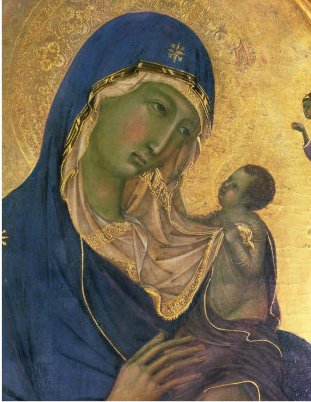 I always used to wonder why some faces painted in tempera had a green tinge to them. I had been told at some point, that this was the underpainting showing through and that the colour of the skin had somehow faded. This is possible: in the 15th century Cennino Cennini described a method in which monochrome underpainting is undertaken in terre verte, an earth green, before a thin transparent layer of skin tone, a pale orange, is applied. Cennino Cennini's method is described in a book called The Method of Tempera Painting). But even so, why put the green there in the first place? It was obviously intended originally to give a greenish tinge to the skin (even before the colour changed over time).When painting icons I was encouraged to use red and green washes in shadows but it was an intuitive process and I wasn't sure what principles were guiding me or why they were used (I probably hadn''t been paying attention in class!).
It wasn't until I went to study portrait painting in Florence that I felt I understood what was going on here. I was taught that we see the deepest shadows are red or red brown and the half-tones are a green grey. The colour is obtained by mixing ivory black, yellow ochre and white. Ivory black has a touch of blue in it and so creates a grey-green when mixed with the yellow and white. The colour produced matches almost exactly the colour of the veins that you see, under the surface of the skin. So if you look at your wrists you will see this colour in the visible veins under your skin there.
What the icon painters and gothic artists are doing is just what the portrait painters were trying to do: match the colour scheme of their paintings with what they see in nature. It shows that even in the highly stylised forms so much is based upon observation of nature.
I always used to wonder why some faces painted in tempera had a green tinge to them. I had been told at some point, that this was the underpainting showing through and that the colour of the skin had somehow faded. This is possible: in the 15th century Cennino Cennini described a method in which monochrome underpainting is undertaken in terre verte, an earth green, before a thin transparent layer of skin tone, a pale orange, is applied. Cennino Cennini's method is described in a book called The Method of Tempera Painting). But even so, why put the green there in the first place? It was obviously intended originally to give a greenish tinge to the skin (even before the colour changed over time).When painting icons I was encouraged to use red and green washes in shadows but it was an intuitive process and I wasn't sure what principles were guiding me or why they were used (I probably hadn''t been paying attention in class!).
It wasn't until I went to study portrait painting in Florence that I felt I understood what was going on here. I was taught that we see the deepest shadows are red or red brown and the half-tones are a green grey. The colour is obtained by mixing ivory black, yellow ochre and white. Ivory black has a touch of blue in it and so creates a grey-green when mixed with the yellow and white. The colour produced matches almost exactly the colour of the veins that you see, under the surface of the skin. So if you look at your wrists you will see this colour in the visible veins under your skin there.
What the icon painters and gothic artists are doing is just what the portrait painters were trying to do: match the colour scheme of their paintings with what they see in nature. It shows that even in the highly stylised forms so much is based upon observation of nature.
Above: a study I made under direction in which the deep shadow lines are red (see the line above the upper eyelid and defining the nose for example); below: a mosaic by a master from Istanbul in which the artist has defined the deep shadow lines in a red brown colour, and the half tones are in earth green. This is handled superbly and has a natural appearance.
Above: a pastel portrait completed while I was in Florence the deep shades are red-brown while the half-tone skin colour is grey green; below: a portrait of 18th century society beauty Lady Hamilton by master George Romney in which he is very skilfully handling the transition from green to red as the shadow gets deeper. And below that is a self-portrait by another the 18th century English master, Sir Joshua Reynolds. Romney and Reynolds are part of the British school that can be traced back to Sir Anthony Van Dyck who was, in turn the star student of Rubens.
Work by Thomas More College Students Learning the Academic Method
 Made Possible by the Generosity of Readers of this Blog. In the autumn I asked for donations towards the tuition of Thomas More College students who wished to take art classes at the internationally recognised Ingbretson Studios in Manchester, New Hampshire, which teaches the academic method of drawing and painting. The academic method has its roots in the methods developed by Masters of the High Renaissance such as Leonardo da Vinci. They are taking this training in addition to all their academic work at the college and are expected to maintain the same standard and effort in their academic work. I am pleased to say that two generous donors came forward and the money they gave helped two students to study for the semester. So on behalf of Liam Mitchell and Jaqueline Del Curto, I would like to thank you and thought I would show you the work they did during the semester.
For both Jaqueline and Liam, this training is part of their career aspirations. Jaqueline wants to be and artist and Liam wishes to go into film and so this will develop his sense of how to communicate visually. They both realise that in addition to the training of the skills, they must have that grounding in philosophy and theology that will form them as individuals and enable them to understand how form communicates meaning. Accordingly they both work hard in academic and practical study towards being the new breed of ambassadors of the Faith, engaging with the world as part of the New Evangelisation.
Made Possible by the Generosity of Readers of this Blog. In the autumn I asked for donations towards the tuition of Thomas More College students who wished to take art classes at the internationally recognised Ingbretson Studios in Manchester, New Hampshire, which teaches the academic method of drawing and painting. The academic method has its roots in the methods developed by Masters of the High Renaissance such as Leonardo da Vinci. They are taking this training in addition to all their academic work at the college and are expected to maintain the same standard and effort in their academic work. I am pleased to say that two generous donors came forward and the money they gave helped two students to study for the semester. So on behalf of Liam Mitchell and Jaqueline Del Curto, I would like to thank you and thought I would show you the work they did during the semester.
For both Jaqueline and Liam, this training is part of their career aspirations. Jaqueline wants to be and artist and Liam wishes to go into film and so this will develop his sense of how to communicate visually. They both realise that in addition to the training of the skills, they must have that grounding in philosophy and theology that will form them as individuals and enable them to understand how form communicates meaning. Accordingly they both work hard in academic and practical study towards being the new breed of ambassadors of the Faith, engaging with the world as part of the New Evangelisation.
What is the Purpose of Veiling? Can you Veil an Icon?
 In a recent discussion about the tradition of placing metal cladding around some icons, it was suggested that one purpose of the cladding was to convey a theological message. It performed the function of veiling of outward appearances in order to reveal an inner, or invisible, holiness. This point is worth further discussion I think.
My understanding of this principle is not sophisticated (and so may by flawed or incomplete) but nevertheless here it is: that in order emphasise the point that there is an invisible reality to whatever is seen, some of the visible elements are veiled in order to emphasise and so to reveal to us this inner reality. This is true for all veiling - human veils, humeral veils, chalice veils and so on. How does this work?
In a recent discussion about the tradition of placing metal cladding around some icons, it was suggested that one purpose of the cladding was to convey a theological message. It performed the function of veiling of outward appearances in order to reveal an inner, or invisible, holiness. This point is worth further discussion I think.
My understanding of this principle is not sophisticated (and so may by flawed or incomplete) but nevertheless here it is: that in order emphasise the point that there is an invisible reality to whatever is seen, some of the visible elements are veiled in order to emphasise and so to reveal to us this inner reality. This is true for all veiling - human veils, humeral veils, chalice veils and so on. How does this work?
First veiling is not hiding. When veiled the form beneath may not be visible directly, but it is still perceptible albeit in a less distinct form. We know what is veiled. For example, the form of a person is still discernable when clothes are worn. The form of the chalice is still recognizable even when veiled, as much by how it is handled as by the outer form. It relies on our knowledge of what is beneath it. If we did not know what a woman is, or a chalice is, we would not have a sense of a chalice veiled, but rather of an object in which the fabric we see represents the surface of it and is intrinsic to it.
 When we recognize a veiled object it makes the point that there is an inner reality that is not directly visible. So the veil is visible, but beyond it is the chalice, perceptible but invisible. In grasping this reality, it makes the point to us that the object itself, even when unveiled, has essential elements that are both visible and invisible. When unveiled, we can be so absorbed with the visible elements that perhaps we fail to grasp fully the invisible realities. So the partial hiding of the visible elements allows us to focus on the invisible.
When we recognize a veiled object it makes the point that there is an inner reality that is not directly visible. So the veil is visible, but beyond it is the chalice, perceptible but invisible. In grasping this reality, it makes the point to us that the object itself, even when unveiled, has essential elements that are both visible and invisible. When unveiled, we can be so absorbed with the visible elements that perhaps we fail to grasp fully the invisible realities. So the partial hiding of the visible elements allows us to focus on the invisible.
In order for this to have any force at all, there must be invisible realities present in the object veiled. The human person is both body and soul; the body is visible, the soul is not. The chalice contains the wine in which after consecration Christ will be truly present, despite outward appearances.
Now to icons: if we apply the same argument, in order for the cladding on an icon to play the part of veiling, the icon must contain essential elements that are invisible and worthy of veneration. In point of fact the icon does not. Therefore, the cladding does not play the part of a veil.
Icon is an image worthy of veneration only to the degree that it is visible. The relationship to the person depicted is set up through the imagination of the viewer and by virtue of what is seen. In this sense the cladding becomes the icon and that part that is hidden ceases to be so. In this we follow the theology of Theodore the Studite, the Eastern Father who settled the iconoclastic controversy in the 9th century. “Theodore quotes a custom already mentioned by Leontius of Neapolis and by Patriarch Germanus: once an icon is worn and has lost its imprint’ (charakter), it will without hesitation be thrown into the fire “like any useless piece of wood’. If the icon as such were a grace-filled object, nobody would dare burn it. It would in itself be some kind of sacred relic. Different from John Damascene, who positions icons and relics on the same level, Theodore the Studite sees the sacredness of the icon entirely in its character, its portraying depiction.’ ”(p226, Christophe Schonborn, God’s Human Face pub. Ignatius)
Organ Music by Frederick Stocken - St Gabriel
Here is the third excerpt in as many weeks of Frederick performing his Archangels trilogy. This is the third movement inspired by the Archangel Gabriel.
http://www.youtube.com/watch?v=1MftfbE_O60&feature=related
Based in London, Frederick Stocken is a composer who is creating modern compositions in the classical tradition. By this, I mean that he creates works that seek to follow traditional principles of harmony and with a melodic richness and complexity appropriate to it - ie his work is neither dissonant nor minimalist. I first became aware of him when he spoke to Joanna Bogle's Catholic Cultural Group in London about the principles of beauty in musical composition. What struck me particular was his approach to understanding the principles of the tradition in which he is working, so that he apply them in modern era. Much of what he articulated became the inspiration for my own approach to resurrecting a culture of beauty with a focus on art.
Shortly after I met him I heard his First Symphony premiered at the Royal Albert Hall in London. I am used to the concert program in which they lure the paying customers in by playing something familiar from the classical repertoire, perhaps Beethoven or Mozart, and then inflict upon the paying customers the premier of a modern piece that is so horribly dissonant and you hope you never have to hear again. It is so predictable, that whenever I see the phrase 'World Premier' in the program I wonder if it is just put after the interlude to raise drinks receipts by encouraging people stay on in the bar a bit longer rather than listen to the clashing chords. i have even heard Catholic composers talk about their aim of producing beautiful music and drawing people to God, and then when you hear the music, it is difficult to distinguish it from any other modernism. Frederick's work is not throw-back or pastiche, but unlike all the others, he is at least prepared to allow the tradition to guide him what he does and you can hear it immediately in his work.
For those who might be within striking distance of Leed in England, he is speaking at the cathedral there on January 4th. The title is: Sing a New Song to the Lord? Musical reflections on the sacred and the secular, tradition and modernity.









